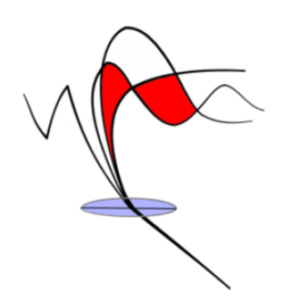Abstract
Correlative microscopy combining light and electron microscopy (CLEM) has become one of the important and unmissable tools in various investigations of complex biological systems revealing high‐resolution structural and highly‐specific functional information [1]. In the last years more combinations of other advanced techniques have been developed, such as combining optical microscopy with atomic force spectroscopy/microscopy (AFM) or with magnetic resonance imaging, etc [2] whereas in our study multimodal optical microscopy has been correlated with ion and electron based techniques such as is helium ion microscopy (HIM) [3]. The purpose for using combination of the complementary techniques was to elucidate or better interpret specific biological problems which could not be explained just by one technique lacking of whether resolution, sensitivity of specificity. We focused on toxicology related scientific questions of how inhaled nanoparticles interact with lung epithelial cells/tissue once get into direct contact and why interactions can eventually lead to diseases and potentially persistent inflammation [4,5]. In order to better understand the interaction on nanometer scales we first developed proper lung in‐vitro model which was followed by proper sample preparation for efficient correlative microscopy using multimodal optical microscopy and high resolution HIM microscopy. By latter we managed to image single metal oxide nanoparticles on cell surfaces interacting with cell membranes, while functional information of the same events was prior measured with confocal and super‐resolution optical microscopy. Besides, we implemented described correlative microscopies also for scientific problem related to rejection of hip implants where material debris is found everywhere in the surrounding periprosthetic tissue with lack of knowledge what happens on a molecular scale. The latest findings of both ongoing studies will be presented.
ROK PODLIPEC is a research scientist at Jozef Stefan Institute, Laboratory of Biophysics. He received his PhD degree from University of Maribor, Faculty of Natural Sciences and Mathematics in 2015. His research interests are development of opto‐spectroscopy based concepts and experimental systems for simultaneous diagnosis and therapy of ocular diseases, Development of the technique for cell adhesion dynamics characterization on scaffolds surfaces suitable for biocompatibility testing studies, Mechanical, morphological and molecular characterization of 3D porous polymer scaffolds for tissue engineering and Fabrication of natural and synthetic 3D porous scaffolds using cryogelation and temperature induced phase separation. He has published over 7 papers in international peer reviewed journals with high impact factor.
*ZAJEDNIČKI SEMINAR Hrvatskog biofizičkog društva, Hrvatskog mikroskopijskog društva i Instituta Ruđer Bošković
![]()





